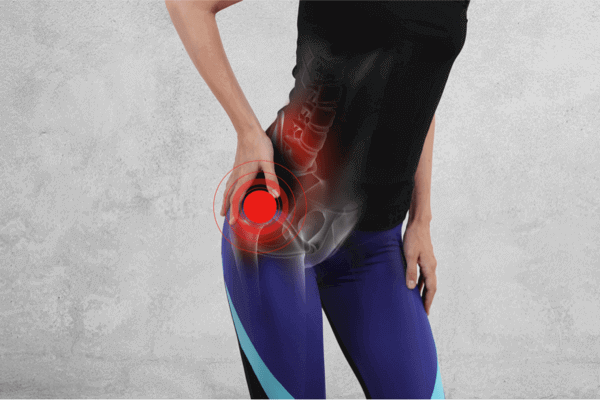HBOT Heals Hemorrhagic Cystitis

How Hyperbarics Helps
Hyperoxygenation
Neovascularization
Fibroplasia
Collagen synthesis
Vasoconstriction
Increased WBC killing capacity
Attenuation of reperfusion injury
Bubble reduction
Stem cell mobilization
What the Research Says
The authors of one large review report that 57% of the 44 patients had complete resolution and another 32% had improvement of 50-90% [Study 1 below]. In another series of 196 patients, 76.3% had either complete or partial resolution. [Study 2 below].
That said, early HBOT intervention is critical in achieving success and preventing loss of life. One study showed that hemorrhagic cystitis patients who do not receive HBOT treatments experience a 3.7% mortality rate. [Study 3 below].
Research Studies
Radiation-induced cystitis treated with hyperbaric oxygen therapy (RICH-ART)
Radiation-induced cystitis treated with hyperbaric oxygen therapy (RICH-ART)
Hyperbaric oxygen and radiation therapy: a review
Hyperbaric oxygen and radiation therapy: a review
Treatment of radiation induced hemorrhagic cystitis with hyperbaric oxygen
Treatment of radiation induced hemorrhagic cystitis with hyperbaric oxygen
Patient Experiences
-

Ginger, 48
Recovered from radiation damage occurred 5 years after her treatment.
Ginger is a talkative, adventurous librarian who loved her dance classes. She had had radiation for her vaginal cancer. However radiation damage occurred 5 years after her treatment. The damage and pain prevented her from dancing and even wearing pants. HBOT resolved her pain, swelling and discharge. Ginger resumed her dance classes, her relations with her husband and returned full time to work wearing pants. She was such an advocate of HBOT she would talk about us and send strangers she had talked to over to see us even 6 years after we healed her.
-

John, 64
Recovered from occasional painful clots due to bladder cancer.
John is a quiet guy with a nice smile who had bladder cancer and radiation therapy 12 years prior to coming in to see us. He had blood in his urine, passed occasional painful clots and had urinary frequency which kept him getting up often at night. After HBOT, the bleeding and passing clots stopped and his frequency resolved.
-

John, 73
Healed from bleeding bladder which even two transfusions couldn’t heal.
John, who is a salt-of-the-earth kind of guy, came in after having multiple other treatments, some very painful, to stop his bladder from bleeding. Unfortunately, none of the previous treatments helped.
Most patients who come to us to try hyperbaric oxygen therapy for a damaged bladder have already tried other conservative measures, which sadly have resulted in failure. In John’s case, he even had two transfusions. He also passed painful clots from time to time that resulted in his having to make several trips to the ER. He got up frequently at night to urinate and limited his social life as a result. Hyperbarics healed John’s bladder, and the bleeding stopped. He left feeling much more enthusiastic about life.
Physicians: Refer a Patient
You Submit Your Patient’s Information
We Get Authorizations
Patient Starts HBOT

Related Articles
Research on Hyperbaric Oxygen Therapy
-
What is Hyperbaric Oxygen Therapy?
Hyperbaric oxygen therapy treats medical conditions with 100% oxygen in a pressurized hyperbaric chamber. The patient lies or sits in the chamber. The oxygen then saturates the plasma in the blood, allowing oxygen to easily flow throughout the body and reach even areas that are injured or diseased, which typically receive less oxygen. The mechanisms of hyperbaric oxygen therapy include stimulating and mobilizing stem cells, down-regulating inflammatory genes, up-regulating reproductive cells and stimulating DNA. HBOT also regrows tiny blood vessels, and stimulates the growth of new healthy cells in the brain, bones, skin, organs, and tissues. People seek hyperbaric oxygen therapy to heal physical damage in their bodies and to promoting health and anti-aging.
-
Does HBOT kill cancer cells?
Current research indicates that hyperbaric oxygen does not kill cancer cells. However, there has been a small amount of research indicating that hyperbaric oxygen might reduce the size of certain tumors. Also, there has been a study on mice using hyperbaric oxygen, along with a ketogenic diet, to reduce tumors. Hyperbaric oxygen causes many different healing modalities to kick into gear. Could its effect on strengthening the immune system inhibit the growth of cancer cells? Nobody knows. There are numerous studies conclusively showing that hyperbaric oxygen does not encourage cancer cells or tumors to grow. Some patients claim the hyperbaric oxygen makes them feel a lot more comfortable and functional after chemotherapy and also during healing. Note that some chemotherapy drugs are not to be used with hyperbaric oxygen, as the chemotherapy drugs can be enhanced and thus become toxic. A good hyperbaric oxygen facility (such as Bay Area Hyperbarics) will always call the chemotherapy manufacturer to ensure that hyperbaric oxygen therapy will be helpful and not damaging to the patient.
-
IWhat is the CPT code for HBOT?
The CPT code for HBOT is G0277.
-
Does Medicare cover HBOT?
Medicare covers Hyperbaric Oxygen Therapy for approved conditions, and many insurance companies also cover approved conditions. If your condition is not approved by your insurance, we can discuss our special rates. Give us a call at (408) 356–7438. We are happy to discuss your options with you.
-
Can HBOT help Neuropathy?
Hyperbaric treatments help heal neuropathy by regrowing small blood vessels and nerves that have died from disease, injuries from radiation and aging. Patients often experience numbness and or pain when they start treatment. Hyperbaric treatments most often bring back sensation and make, for example, walking easier and more enjoyable.
-
Why would a physician consider HBOT?
A physician would consider using hyperbaric chamber therapy under a variety of situations. Physicians most typically refer patients to hyperbarics when the patient is not healing with traditional medical interventions and hyperbaric chamber therapy is approved by Medicare for this condition. Some patients experience significant unresolved pain and unremitting disease states that the mechanisms of hyperbaric oxygen therapy in a hyperbaric chamber are known to affect, such as the down regulation of inflamatory genes. For an example, some patients have experienced severe, unremitting hives with itching, which did not improve with any specialists interventions. Some physicians will consider hyperbaric chamber therapy if the patient has no other good avenues for improving their failing health, and they know the hyperbaric chamber therapy is safe and will not harm the patient.
-
What is Hypebaric Oxygen Therapy?
Hyperbaric Oxygen Therapy (HBOT) Hyperbaric Oxygen Therapy (HB0T) is a medical treatment where you inhale 100% oxygen in a chamber with increased atmospheric pressure. HBOT injects 400x the oxygen into your tissues and bones and mobilizes stem cells. It regrows healthy tissues in the brain, blood vessels, skin and bones. It also reduces pain and swelling, and speeds recovery. It is simple, effective and painless.
Have more Questions?




